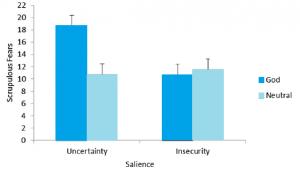The previous post took a look at suicides in Switzerland, with a new study showing that, although the non-religious have a higher suicide rate than the religious, that seems to be largely down to assisted dying.
Switzerland is not like most other countries, however, which is where a new study, from an international team lead by Merike Sisak at the Estonian-Swedish Mental Health and Suicidology Institute, comes in. They looked at data from a major new WHO initiative, SUPRE-MISS. The main objective of this study is to understand the factors that contribute to suicide in different countries, and what can be done to reduce them.
In each country, people who have attempted suicide are brought into the study and given a questionnaire to fill out. Another group of people, randomly chosen, are given the same questionnaire. That allows the team to compare religious affiliation, involvement in organised religion, and individual religiosity in suicide attempters and the general population.
When they looked at the data, and adjusted them for a host of factors known to affect suicide risk (age, gender, marital status, employment, and education), a complex picture emerged.
In Iran, religion was highly protective, whether religion was measured as the rate of mosque attendance or as whether the individual thought of themselves as a religious person.
In Brazil, going to religious services and personal religiosity were both highly protective. Bizarrely, however, religious affiliation was not. That might be because being Protestant was linked to greater risk, and Catholicism to lower risk. Put the two together, and it may balance out.
In Estonia, suicides were lower in those who were affiliated to a religion, and those who said they were religious. They were also a bit lower in those who
In India, there wasn’t much effect of religion at all – a bit lower in those who go to religious services at least occasionally.
Vietnam was similar. Those who went to religious services yearly were less likely to have attempted suicide, but no other measure of religion had any effect.
In Sri Lanka, going to religious services had no protective effect, but subjective religiosity did.
In South Africa, those who go to Church were no less likely to attempt suicide. In fact, those who said they were religious were actually nearly three times more likely to attempt suicide, and those who were affiliated to a religion were an incredible six times more likely!
These are very large differences. In Brazil, religious people are six times less likely to commit suicide than the non religious. In South Africa, they are three times more likely. How to explain these national differences?
Part of it might be differences in the predominant religion. The protective effect of religion seems to be higher in monotheistic countries, and it’s particularly high in the most fervently monotheistic country, Iran. In India, Sri Lanka, and Vietnam, the protective effect is smaller or non-existent.
But that doesn’t explain South Africa. South Africa is unusual in that it is a highly diverse country, fractured by ethnic, social and religious boundaries. The researchers think that this might be a factor:
South Africa has been described as ‘‘The Rainbow Nation’’ because of its cultural diversity. There are a variety of ethnic groups and a greater variety of cultures within each of these groups. While cultural diversity is seen as a national asset, the interaction of cultures results in the blurring of cultural norms and boundaries at the individual, family and cultural group levels. Subsequently, there is a large diversity of religious denominations and this does not seem favorable in terms of providing protection against attempted suicide.
They point out that earlier studies have shown that religious homogeneity is linked to lower suicide rates, and they suggest that the reverse might well be happening in South Africa.
In fact, this also could explain why, in Brazil, Protestants have a higher suicide rate than the unaffiliated. That too could be linked to their status as a religious minority.
So once again we’ve got a study showing the double-edged nature of religion. For those inside the group, it provides support and comfort. But once fractures appear, religion just seems to turn up the heat!
![]() Sisask, M., Varnik, A., Kolves, K., Bertolote, J., Bolhari, J., Botega, N., Fleischmann, A., Vijayakumar, L., & Wasserman, D. (2010). Is Religiosity a Protective Factor Against Attempted Suicide: A Cross-Cultural Case-Control Study Archives of Suicide Research, 14 (1), 44-55 DOI: 10.1080/13811110903479052
Sisask, M., Varnik, A., Kolves, K., Bertolote, J., Bolhari, J., Botega, N., Fleischmann, A., Vijayakumar, L., & Wasserman, D. (2010). Is Religiosity a Protective Factor Against Attempted Suicide: A Cross-Cultural Case-Control Study Archives of Suicide Research, 14 (1), 44-55 DOI: 10.1080/13811110903479052
 This article by Tom Rees was first published on Epiphenom. It is licensed under Creative Commons.
This article by Tom Rees was first published on Epiphenom. It is licensed under Creative Commons.













